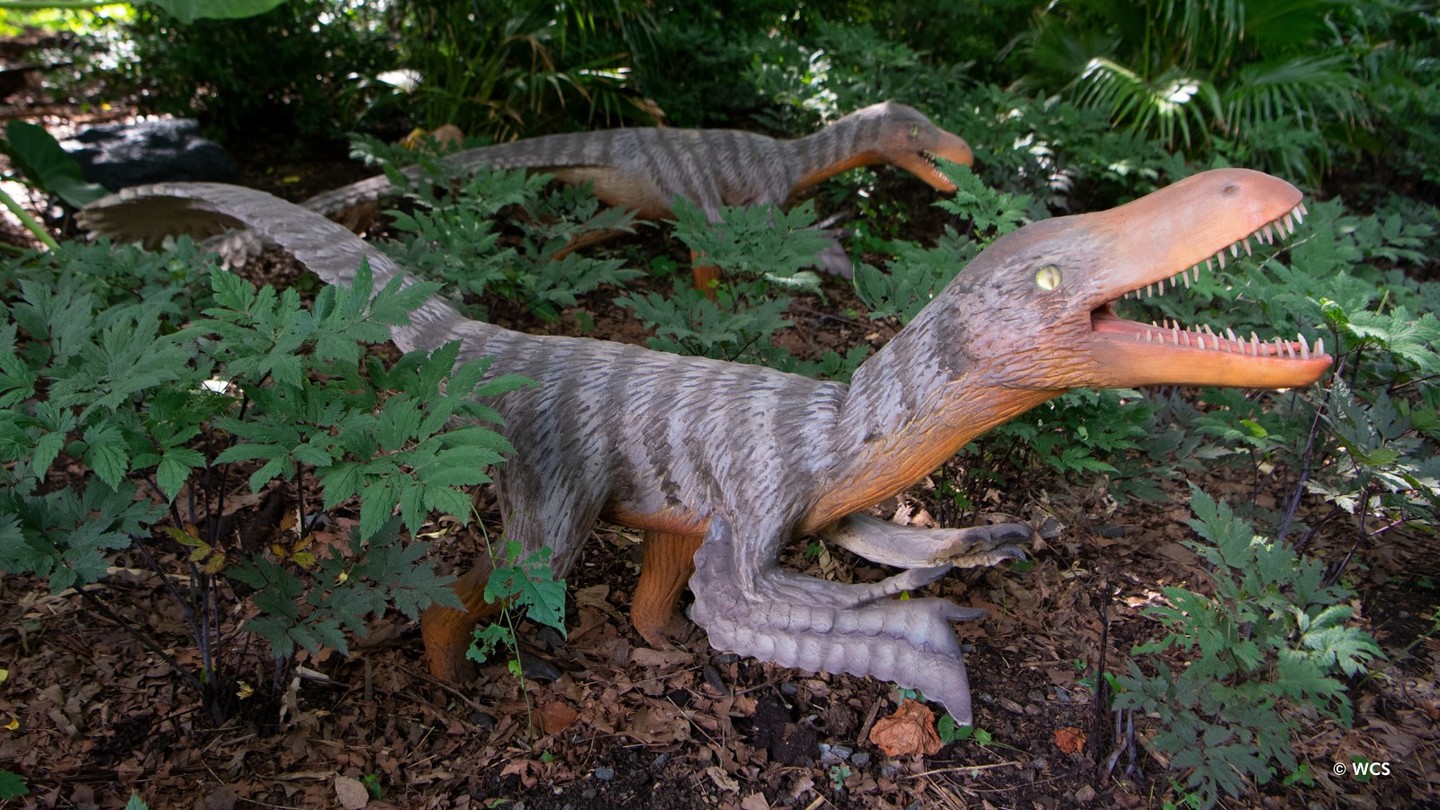- Velociraptors were not the giant predators as portrayed in movies; they were smaller and likely solitary hunters.
- The anatomical adaptations of velociraptors suggest a close relationship with modern birds, highlighting their evolutionary significance.
- The hunting techniques of velociraptors differed from the common portrayal, focusing on their unique claw usage rather than fierce slashing attacks.
- Understanding the ecology of velociraptors provides insight into their role in prehistoric ecosystems and informs our knowledge of current conservation efforts.
- Engaging with exhibits like "Dinosaur Safari" can deepen public appreciation for both prehistoric animals and their living descendants.
Velociraptors are among the most famous dinosaurs, thanks to their depiction in blockbuster films that often exaggerate their features. The portrayal of velociraptors as giant, scaly beasts that hunt in packs is far removed from reality. In truth, these creatures were relatively small, weighing under 50 pounds, and they likely hunted alone. Understanding the actual characteristics of velociraptors helps to paint a more accurate picture of these fascinating theropods and their lifestyle.
The size of velociraptors is often misunderstood. In movies, they appear much larger, leading audiences to envision them as 200-pound monsters. In reality, they were comparable in size to a modern-day turkey, with a body length of about 6.5 feet. Despite their smaller size, velociraptors were remarkable predators, equipped with features that made them highly adapted for survival.
One of the most striking characteristics of velociraptors is their appearance. Unlike the scaly behemoths seen in movies, scientific evidence suggests that velociraptors had feathers. Paleontological discoveries have revealed fossilized impressions of feathers on their skeletal remains, contributing to the understanding that many theropods shared this trait. The presence of feathers indicates that velociraptors were not just reptiles but were more closely aligned with birds, which are their modern descendants.
This connection to birds is underscored by the numerous anatomical similarities found between velociraptors and contemporary avian species. Velociraptors possessed hinged ankles, swivel-jointed wrists, and wishbones, which are distinctive traits of birds. These features demonstrate versatility and agility, allowing them to navigate their environments effectively. The evolution of these adaptations signifies an evolutionary trajectory that links dinosaurs to their avian relatives, providing insights into the biology and behavior of both groups.
The hunting technique of velociraptors is another area where common misconceptions abound. Films often depict these creatures as ferocious pack hunters, employing coordinated attacks to bring down large prey. However, the evidence leans toward a different behavior. Their sickle-shaped claws were not designed primarily for slashing, as many cinematic portrayals suggest. Instead, these claws were utilized to pierce and hold onto prey rather than make sweeping cuts. This more nuanced approach to hunting indicates that velociraptors may have targeted smaller animals and would have relied on stealth and speed rather than sheer force.
In addition to understanding the ecological role of velociraptors, it is crucial to appreciate the impact of their existence on prehistoric ecosystems. Velociraptors lived during the Late Cretaceous period, around 75 million years ago. They inhabited diverse environments, including forests and floodplains, where they likely occupied niches as adept predators. This suggests that their role was integral to maintaining a balance within these ecosystems, preying on smaller animals and potentially competing with other theropods.
Understanding the biology and ecology of velociraptors not only enriches our knowledge about these ancient creatures but also has contemporary implications. The study of velociraptor traits illuminates important discussions in wildlife conservation and biodiversity. Recognizing the evolutionary links between dinosaurs and birds emphasizes the importance of preserving habitats essential for modern bird species and other wildlife.
Engaging with exhibits like "Dinosaur Safari" provides an excellent opportunity to learn more about velociraptors and their descendants. Facilities that showcase these ancient creatures often feature educational programs, allowing visitors to gain a deeper appreciation for the connections between past and present wildlife. Interactive displays can enhance the understanding of bird and reptile characteristics, showcasing how certain features have evolved over millions of years.
For instance, the “Dinosaurs of Today” encounter highlights the surprising similarities between modern birds and dinosaurs like the velociraptor. This program engages participants, drawing attention to the conservation responsibilities we hold. By understanding these connections, people can become advocates for wildlife conservation, recognizing the importance of protecting species and their habitats to ensure biodiversity persists.
In summary, the myths surrounding velociraptors have obscured their true nature as small, feathered creatures more akin to birds than the fearsome predators frequently depicted in popular culture. This understanding opens a window into their evolutionary significance and their role within ancient ecosystems. Learning about velociraptors ultimately enriches our understanding of wildlife conservation efforts today.
By exploring the Dinosaur Safari exhibit, individuals can immerse themselves in a world where paleontology meets contemporary science. Such educational experiences can inspire a sense of urgency regarding the preservation of ecosystems, as they encourage a connection to both ancient and modern wildlife. Engaging with these narratives serves to cultivate a better future for all living species, underscoring the importance of understanding and protecting the delicate web of life on Earth.
*****
Source Description
As if you need another excuse to experience Dinosaur Safari, today is which means you are now required to visit 😏. On this day, we’re debunking several velociraptor myths that made their way into popular movies.
🦖 Velociraptors are not giant scaly dinosaurs that hunted in packs, but were actually feathered animals that weighed under 50 pounds and likely hunted solo.
🦖 These animals used their sickle-shaped claws to pierce and clutch rather than slash prey.
🦖 Velociraptors had many traits that are now found in modern-day birds, including hinged ankles, swivel-jointed wrists, and wishbones.
Learn more about these fascinating theropods on the Dinosaur Safari trail, or during our “Dinosaurs of Today” wild encounter where you can learn more about the traits birds and reptiles share with prehistoric animals. See the link in profile.


